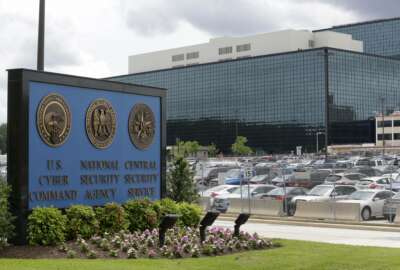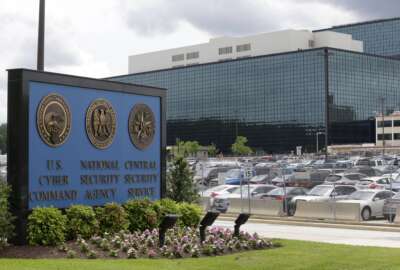NSA getting ‘a lot more flexible’ under major workforce initiative
The director of the NSA's "Future Ready Workforce" initiative says "we’ve got some room to grow in our telework functions."
Conversations around telework and other flexibilities sound a little different at the National Security Agency.
While many companies are bringing people back into the office and the White House is directing agencies to increase “meaningful in-person work,” the NSA is considering how to increase telework options that were mostly non-existent at the highly secretive agency before COVID-19.
“I get leadership telling me that a lot. ‘Why are you pushing telework, Kristina? Everybody else is coming back.’ [But] they’re going from 100% to 75. We’re at 4%. We’ve got some room to grow in our telework functions,” Kristina Walter, director of the NSA’s Future Ready Workforce initiative, said at an event last week hosted by the Intelligence and National Security Alliance.
More than 50% of the NSA’s workforce is retirement eligible, Walter said. And as the agency replaces retiring employees with new ones, it projects the share of its workforce that has worked there for five years or less will rise to 20%.
Those shifting demographics mean the NSA is on a major, multiyear hiring push and considering a range of workplace flexibilities it would have previously considered unimaginable.
But one of the cultural challenges, Walter said, is how most work at the NSA is still carried out on the classified “high side” networks and installations.
“We don’t have a critical mass of people doing unclassified work on the low side,” she said.
The agency has launched a pilot program that allows new hires to start working on unclassified problems while they await the typically lengthy security clearance process. Walter said the agency is building on that by looking at all its functions that could be done in an unclassified manner.
Areas ranging from contracting, training and recruitment to even software development, cybersecurity analysis, and research could all be done, to a certain extent, in an unclassified environment, Walter said.
“We’ve had applicants come in, and they’re working on unclassified problems, they’re getting paid while they go through the clearance process to try to expedite that,” she said. “So we’re looking forward to expanding that pilot as we get more critical mass down on the low side of people who work at the agency full time.”
The NSA’s foray into more flexible work arrangements is in line with a new white paper from INSA, “Reimagining the SCIF Life,” that recommends intelligence agencies consider ways to make classified work more amenable, while also taking a hard look at what truly could be unclassified instead.
The pandemic forced many intelligence agencies to shift to more unclassified work temporarily. Now, the question is whether those agencies will implement more permanent changes.
“There were a lot of innovative things done during the pandemic. And those things brought better work-life balance and they were of benefit to employees, in some cases, and at the same time mission got done,” John Doyon, INSA’s executive vice president, said on Inside the IC.
The white paper recommends agencies consider options such as shared SCIFs so employees don’t have to travel as far every day to their home office if they’re closer to another classified facility. It also recommends they look at ways to make working within a SCIF a better experience, such as through more unclassified spaces where people can check mobile devices and use the internet.
“The only way I can reach my personal care physician is through the online portal. Nobody seems to answer the phone,” Doyon points out. “And so this is where we are with technology today.
And we need to make these technologies like internet access and places for people to use their cell phones available to employees.”
At the NSA, Walter said there’s been big changes in just the last six months with the introduction of more “community flex spaces” where employees can make unclassified phone calls.
The NSA is also considering how it can “hotel” employees at other intelligence community facilities so they don’t have to travel as far everyday, she said.
“How do we enter into agreements with folks so that our folks don’t have to drive up every day of the week and they can spend one week at the DC office and then come up full time,” she said. “So it is getting a lot more flexible, and we’re expanding some of those options.”
And on the recruiting side, the NSA is also looking to make it easier to move in and out of the agency.
“Typically our culture was if you left, we kind of wrote you off, and didn’t really stay in touch,” Walter said.
The agency recently launched an “alumni program” and held an inaugural event where retirees were invited to network with agency employees as a way “to stay connected,” Walter said. “It’s a way to fast track you back in,” she said.
“So we’re working through all of those processes to make it a more fluid environment, because we recognize that’s a demand moving forward,” Walter said.
Copyright © 2025 Federal News Network. All rights reserved. This website is not intended for users located within the European Economic Area.
Follow @jdoubledayWFED






